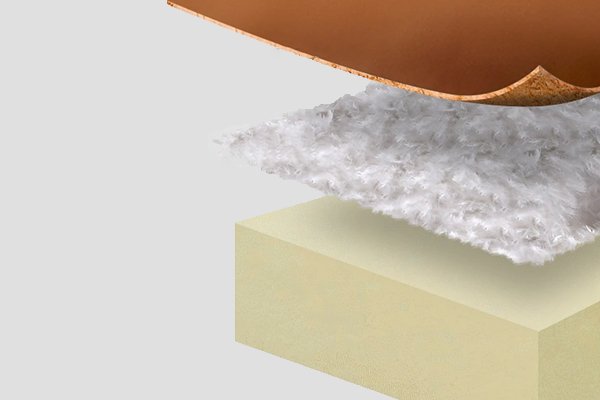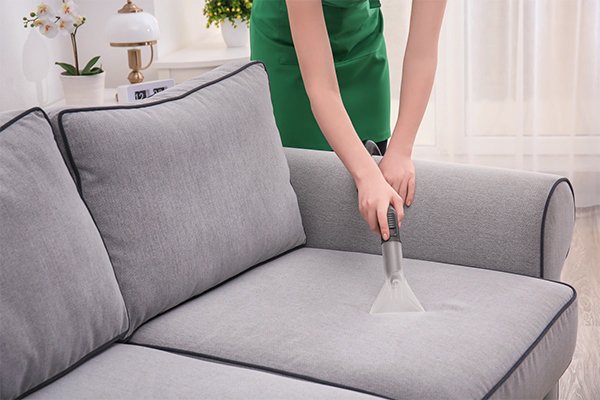
Why Does Non-Woven Fabric Matter in Sofa Durability?
Sofa durability is a key concern for manufacturers, retailers, and consumers alike. A high-quality sofa should not only look great but also withstand daily use over the years. One of the often-overlooked materials that significantly impact a sofa's longevity is non-woven fabric. Used in various parts of sofa construction, non-woven fabric enhances durability, comfort, and structural integrity.
What Is Non-Woven Fabric?
Non-woven fabric is a synthetic textile material made by bonding fibers together through chemical, heat, or mechanical processes rather than weaving or knitting. This unique structure provides several benefits, including durability, breathability, and cost-effectiveness. In the sofa industry, non-woven fabric is widely used for padding, upholstery backing, and support layers.

Key Properties of Non-Woven Fabric:
- Durability: High resistance to wear and tear.
- Breathability: Promotes airflow, reducing moisture buildup.
- Lightweight: Easy to handle and incorporate into sofa designs.
- Cost-Effective: Provides excellent performance at a lower cost compared to woven fabrics.
- Flame Retardant Options: Enhances safety in home environments.
How Non-Woven Fabric Contributes to Sofa Longevity
1. Structural Support
Non-woven fabric is commonly used in the sofa frame as an underlayment beneath the cushions and upholstery. This fabric layer helps distribute weight evenly, preventing excessive sagging and extending the lifespan of the seating area. It also reinforces the frame, reducing stress on wooden or metal components.
2. Upholstery Backing and Cushioning
The fabric serves as a backing for the sofa’s upholstery, providing additional support and preventing the outer fabric from stretching or losing shape over time. In cushions, non-woven fabric acts as an inner lining, protecting the foam from wear and tear while maintaining its structure.
3. Moisture and Mold Resistance
Breathable non-woven fabric allows proper air circulation, preventing moisture buildup that can lead to mold and mildew growth. This is especially beneficial in humid climates or for sofas placed in poorly ventilated areas.
4. Enhanced Comfort
Non-woven fabric can be used in the padding layers of a sofa, offering additional softness and comfort. It helps create a plush seating experience without adding excessive bulk, making sofas more inviting and ergonomic.
5. Fire Resistance for Safety
Many non-woven fabrics used in sofas are treated with flame-retardant chemicals to improve fire safety. This feature is particularly important for compliance with industry regulations and ensuring household safety.

Types of Non-Woven Fabrics Used in Sofas
| Type | Characteristics | Best Use |
|---|---|---|
| Polypropylene Non-Woven | Strong, moisture-resistant, lightweight | Upholstery backing, underlayment |
| Polyester Non-Woven | Soft, durable, resistant to wrinkles | Cushion lining, padding layers |
| Spunbond Non-Woven | High tensile strength, breathable | Frame support, fire-resistant interliners |
| Needle Punched Non-Woven | Dense, impact-resistant | Cushion underlayers, base reinforcement |
Choosing the Right Non-Woven Fabric for Sofa Manufacturing
When selecting non-woven fabric for sofas, manufacturers must consider factors such as durability, comfort, and cost. The type of fabric used will depend on the design and intended usage of the sofa.
Key Considerations:
- Usage: Sofas for high-traffic areas require more durable non-woven fabrics.
- Thickness and Density: Higher density fabrics provide better structural support.
- Moisture Resistance: Ideal for humid environments to prevent mold buildup.
- Fire Retardancy: Compliance with safety standards is crucial.
Conclusion
Non-woven fabric plays a vital role in enhancing sofa durability, providing structural support, moisture resistance, comfort, and fire safety. Its lightweight yet durable properties make it a cost-effective choice for manufacturers seeking to create long-lasting, high-quality sofas. By understanding the advantages of non-woven fabric, both manufacturers and consumers can make informed decisions when selecting sofas that offer superior longevity and comfort.